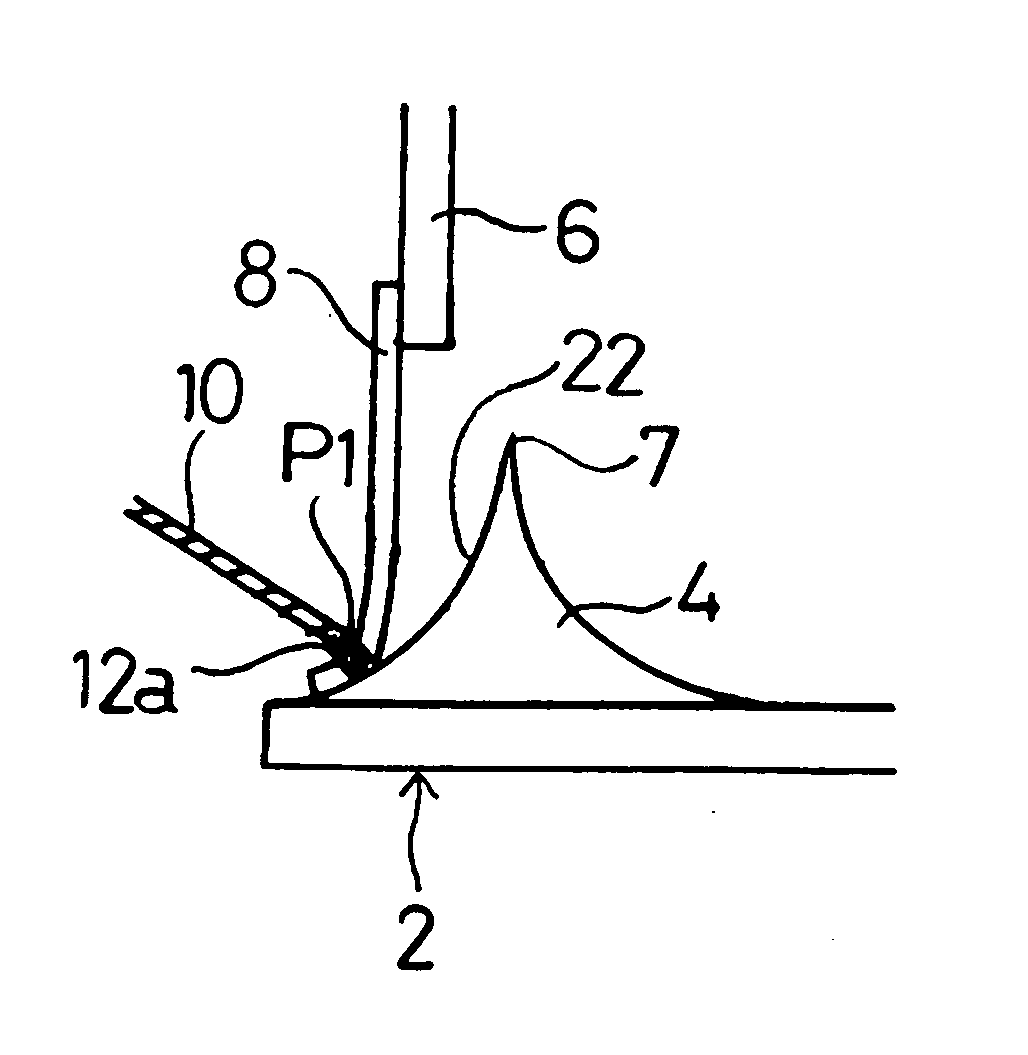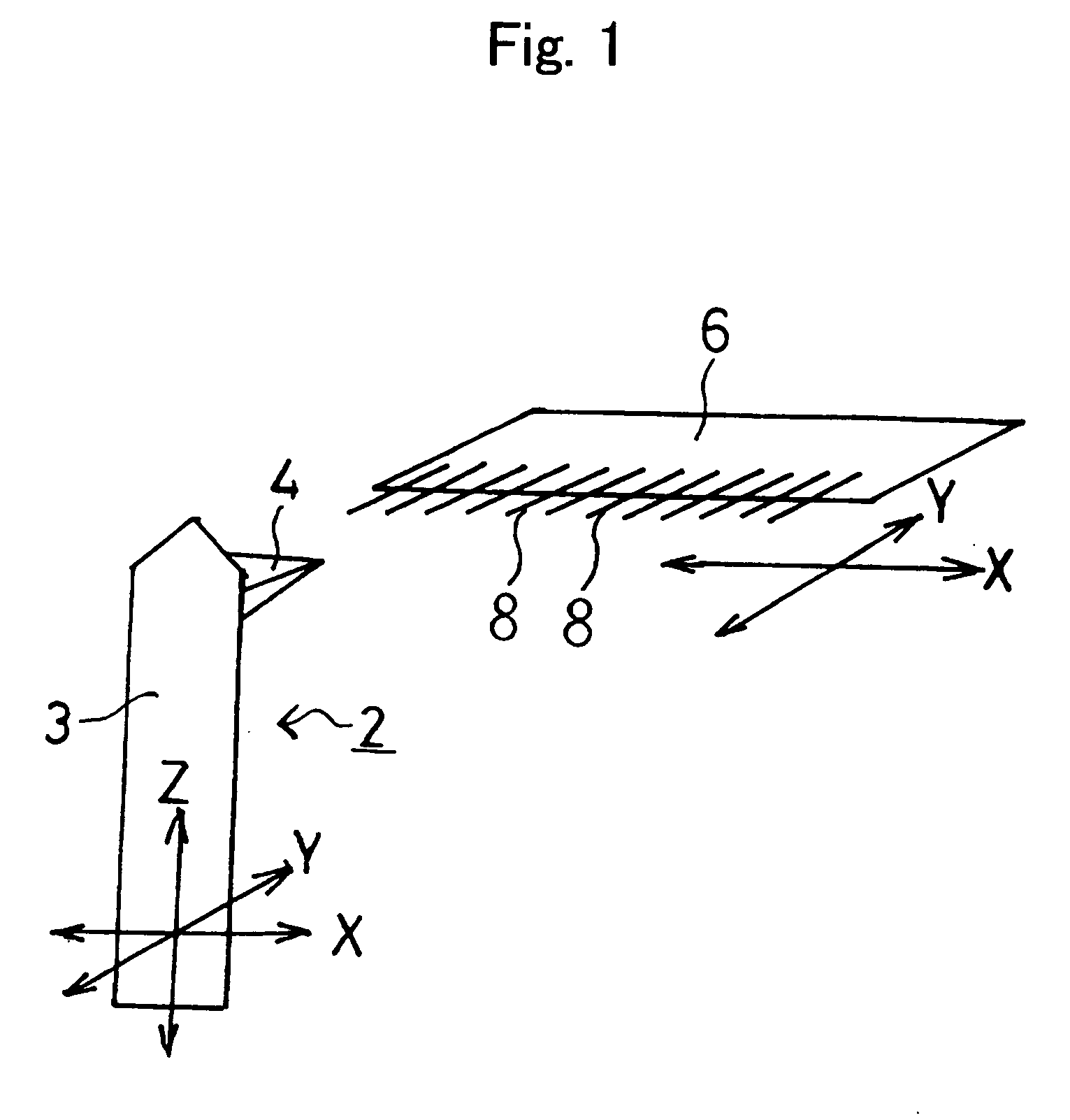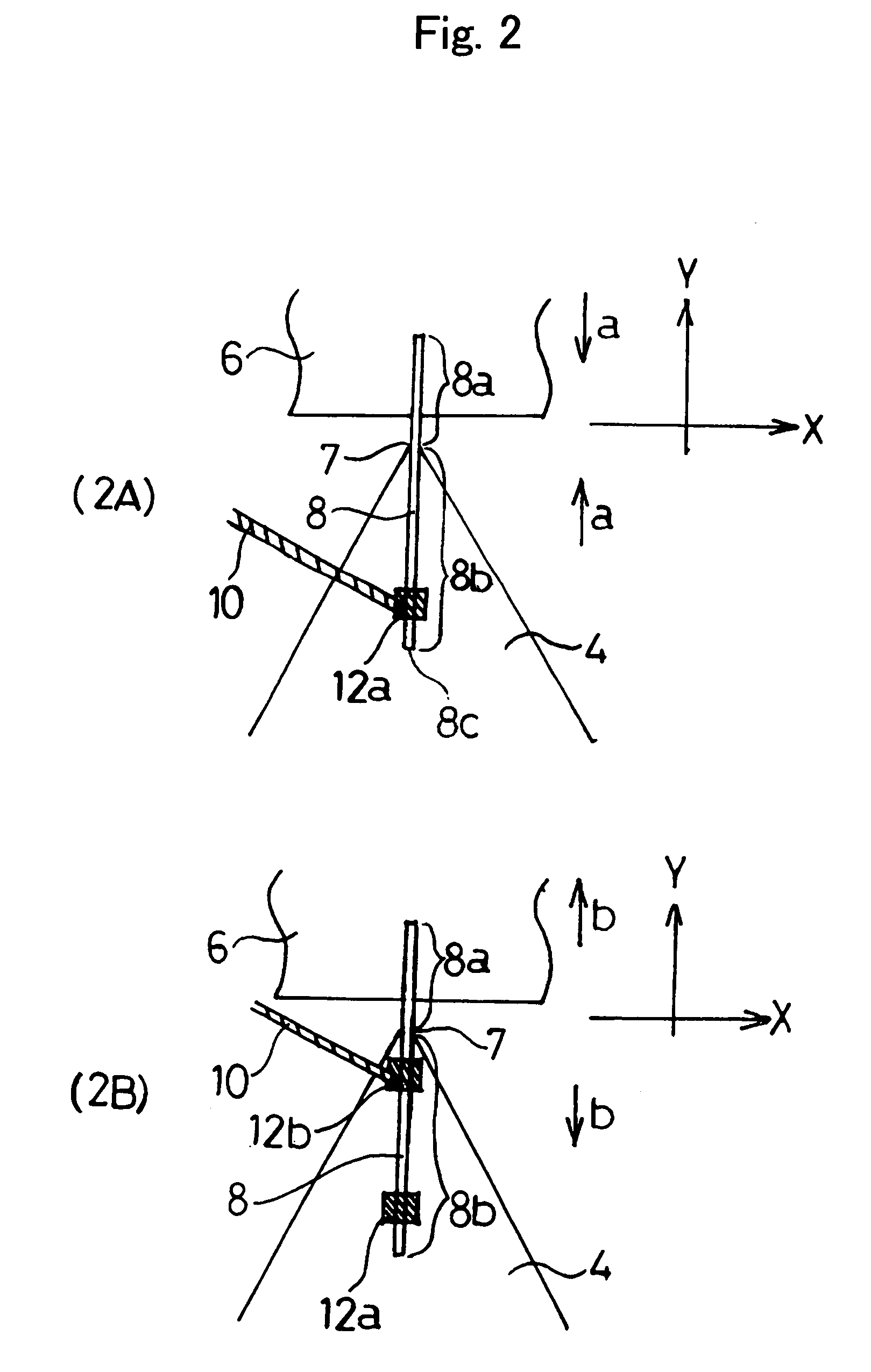Nanotube probe and method for manufacturing the same
a nanotube and probe technology, applied in the field of nanotube probes, can solve the problems of difficult even to fix the nanotube, difficult to observe directly a nanotube as small as 100 nm, and requires a very high level of microscopic processing technology, and achieves the effects of high accuracy, short time, and easy formation
- Summary
- Abstract
- Description
- Claims
- Application Information
AI Technical Summary
Benefits of technology
Problems solved by technology
Method used
Image
Examples
Embodiment Construction
[0064] The inventor of the present invention and his team have made strenuous development efforts to improve the nanotube probe constructed by the overall coating method, with a result that a nanotube probe by way of partial coating films have been completed. Following are more detailed description of the present invention related to nanotube probes and manufacturing method thereof with reference to the accompanying drawings.
[0065] This partial coating method provides for a nanotube probe and manufacturing method thereof, wherein a nanotube can be fastened to a surface of a holder in short time, the amount of impurities adhering to the holder surface can be reduced to a bare minimum, and an arbitrary shape of holder can be used.
[0066] In the following description of embodiments, a protruded portion of a cantilever used for AFM is used as a holder on which a nanotube is fastened. However, the holder is not limited to cantilevers, but any other component on which a nanotube can be f...
PUM
| Property | Measurement | Unit |
|---|---|---|
| thickness | aaaaa | aaaaa |
| angle | aaaaa | aaaaa |
| diameter | aaaaa | aaaaa |
Abstract
Description
Claims
Application Information
 Login to View More
Login to View More - R&D
- Intellectual Property
- Life Sciences
- Materials
- Tech Scout
- Unparalleled Data Quality
- Higher Quality Content
- 60% Fewer Hallucinations
Browse by: Latest US Patents, China's latest patents, Technical Efficacy Thesaurus, Application Domain, Technology Topic, Popular Technical Reports.
© 2025 PatSnap. All rights reserved.Legal|Privacy policy|Modern Slavery Act Transparency Statement|Sitemap|About US| Contact US: help@patsnap.com



